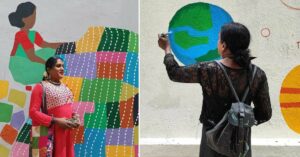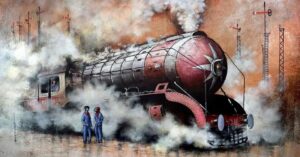In Pics: Inside The Only Town in India Responsible for Preserving a 300-YO Artform
In the ancient town of Nathdwara, Rajasthan, a collective by the name of Artists of Nathdwara is preserving the 300-year-old art of Pichwai. Take a look at this globally acclaimed artform in these pictures.

Located along the banks of the Banas River against the backdrop of the Aravalli Hills, Nathdwara is a piece of history whose charm has only grown with time; a muse for every art lover.
In Nathdwara, time does not tick at its usual pace, and you won’t need maps to find your way. The artists of the town and their tales will suffice. The origin story of this town goes back to the 17th century, when the Shreenathji temple was established here, which continues to be the main draw of the town, attracting scores of devotees every year.
The story goes that Vallabhacharya, a Brahmin from the Andhra region, was commanded to go to Mount Govardhan by none other than Krishna himself. Here, he discovered the living image of Shri Govardhananathji (a form of Lord Krishna), who came to be known as Shrinathji. Known to be the seven-year-old version of Krishna, Shreenathji is the presiding deity of the Vaishnava sect and the town of Nathdwara.
As time progressed, Vallabhacharya’s son Vitthalnathji began encouraging artist groups in Nathdwara to design pichvais that would be used to adorn the temple and the city. These intricate paintings of the deity, would in a few hundred years go on to become the symbol of Nathdwara and its way to the world.

Suresh Sharma, founder of the ‘Artists of Nathdwara’ — an association of the artists who are descendants of the Vaishnava sect and reside behind the Shreenathji Temple in the ‘chitrakaron ki galli (artists’ street)’ — is behind this introduction of pichvai form of art to the global stage.
But even as there is so much talk about this artist association founded in 2015, Suresh says they are simply continuing the legacy that was left behind by their forefathers. Speaking to The Better India, he recalls, “The environment in the home was one of art. Everyone, including the women, would be engaged in this pichvai art form. Not just the home, but the entire town was filled with it. Inspiration came easy.”
He goes on to tell of how it is a tradition in the town for artists to start working on their individual paintings when they turn 14. This is an attempt at becoming independent.
In the recent past, especially after the founding of the artist association, Suresh says pichvai has received massive attention. “Earlier, the sale of our paintings would be limited to the dharamshalas (charitable houses) in Nathdwara. But now we see orders from shops in and around Rajasthan, and the online market too has been a boost to sales. We are changing with the times.”
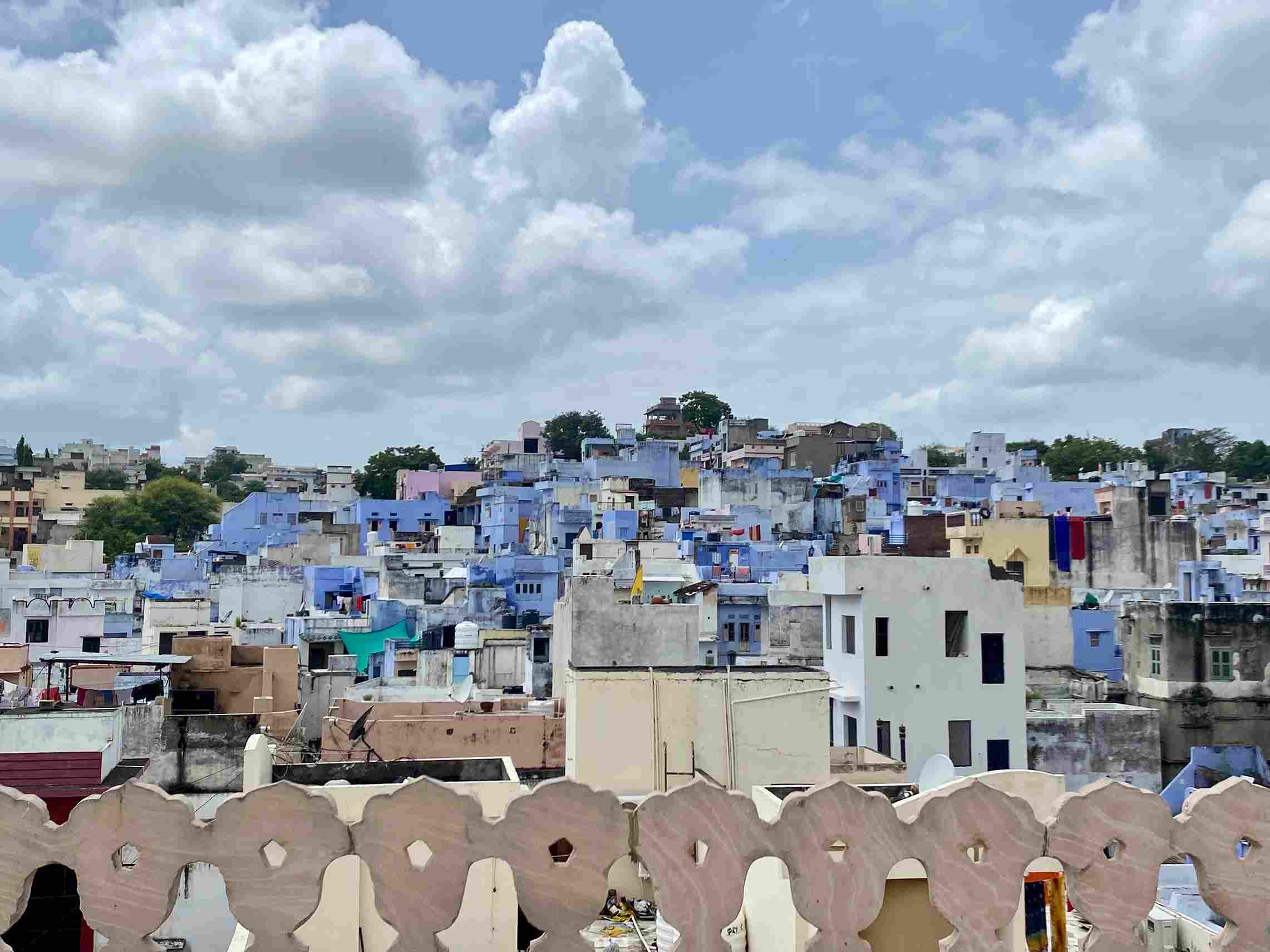
Tracing the beauty of the pichvai art
The name ‘pichvai’ has roots in the Sanskrit words pich (behind) and wai (hanging). The artworks are decked pieces of fabric often hung in temples and reflect intricately designed stories of the life of Shreenathji, temple rituals, and the Chappan Bhog, which is the feast comprising 56 delicacies. The artists of Nathdwara have come to be synonymous with their expressive works which detail animal features, rituals involving animals and more.
As Suresh emphasises, nature is prime in every work of art. “For the paintings that revolve around people and deities, the proportions and consistency are key. Colour combinations are important too. There needs to be the right balance.”
He adds that the goal of every work of art isn’t to be sold, but rather to evoke an emotion in the viewer.
The pichvai art employs the use of natural colours, the same ones that were used 300 years ago, Suresh notes. “There was a process followed for the colours. Ingredients such as mud or neel would be ground on stone and then strained, followed by mixing with gum to get the right consistency. Then shades of the colour would be prepared.”
The wonder of the pichvai has crossed the sands of Rajasthan and found its way to the recently inaugurated Nita Mukesh Ambani Cultural Centre (NMACC) in Mumbai. Suresh speaks about one of the largest pichvai paintings that is currently at the centre — a sprawling 27 x 57 ft work of art that took eight months to make, replete with dancing peacocks and lotus flowers.
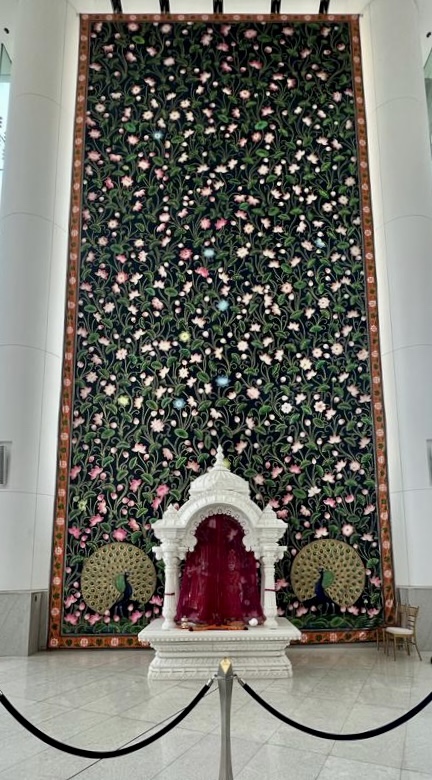
A glimpse of history in pictures
Here are a few of the artworks created by the artists of Nathdwara as an ode to Shreenathji and the lores that surround the deity.
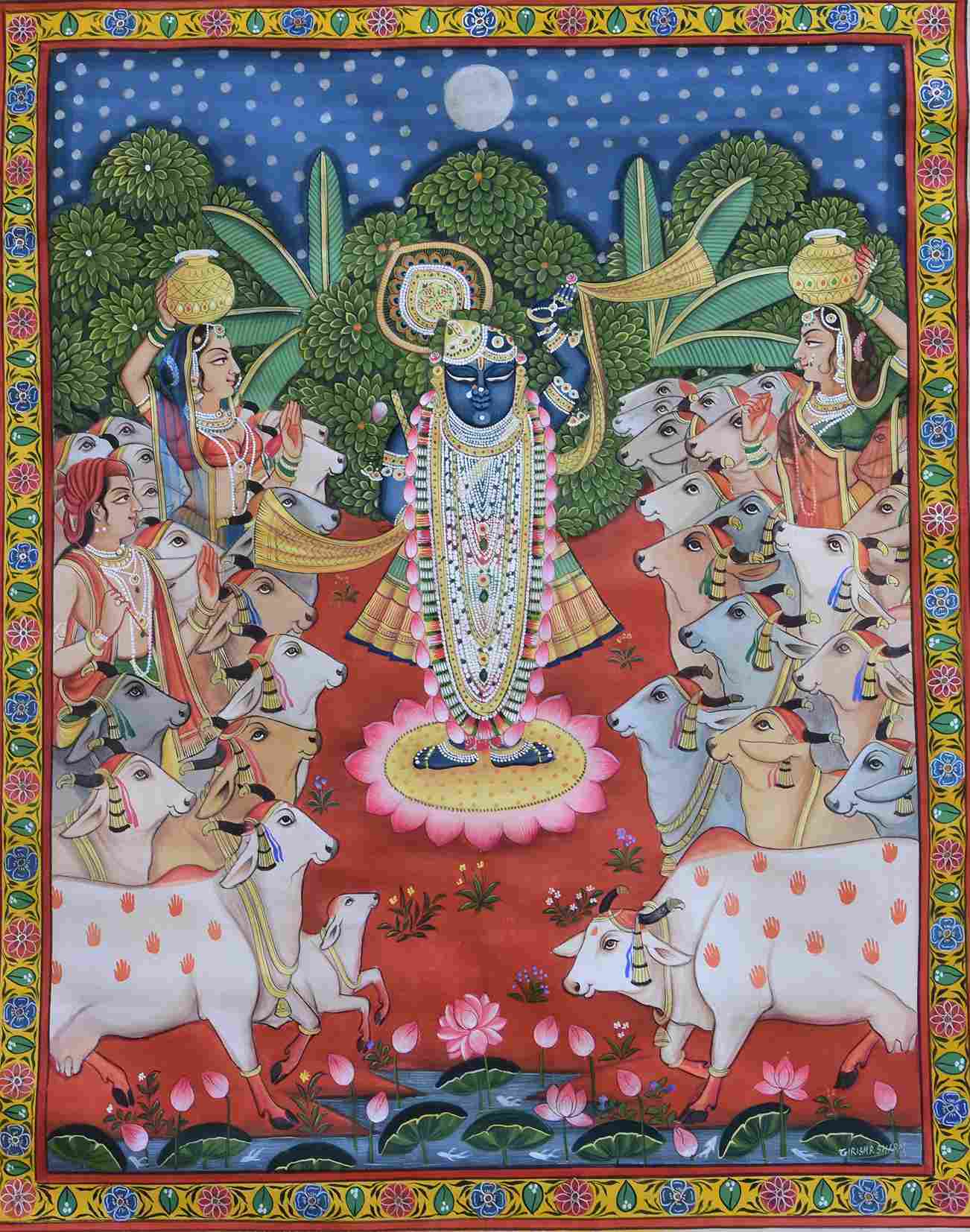
This work celebrates Gopashtami, the Festival of Cows, which occurs in late autumn and heralds Krishna’s elevation from a herder of calves to a full-fledged cowherd. During this auspicious festival, cows are adorned with henna designs and handprints, peacock plumes, and bells.
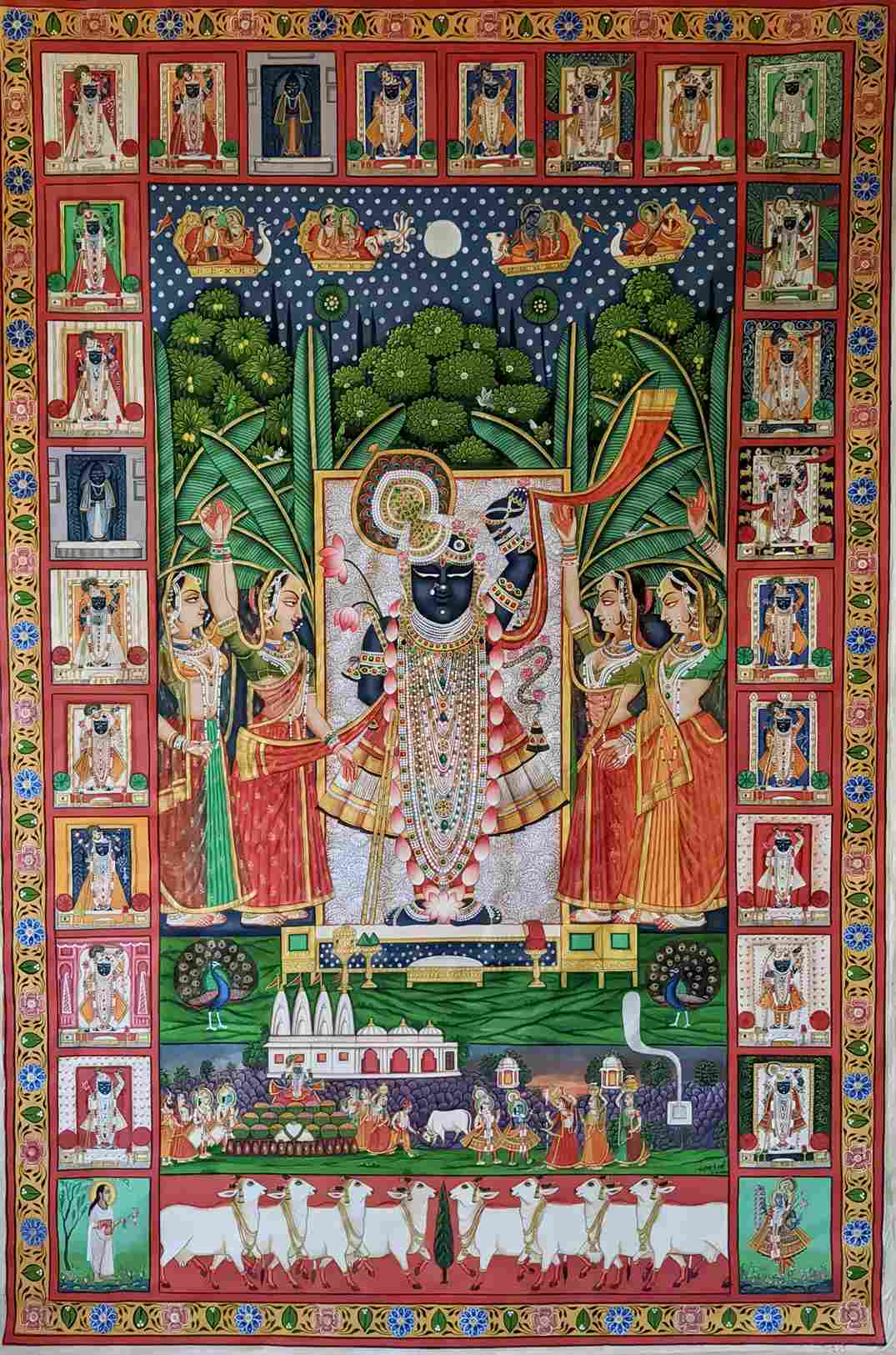
This pichvai is a celebration of the festival of Sharad Purnima —the first full moon night (Purnima) of the monsoon, which marks the onset of autumn (Sharad). Here we see Shrinathji flanked by beautiful gopis with a frame comprised of the 24 svarup of Lord Krishna.
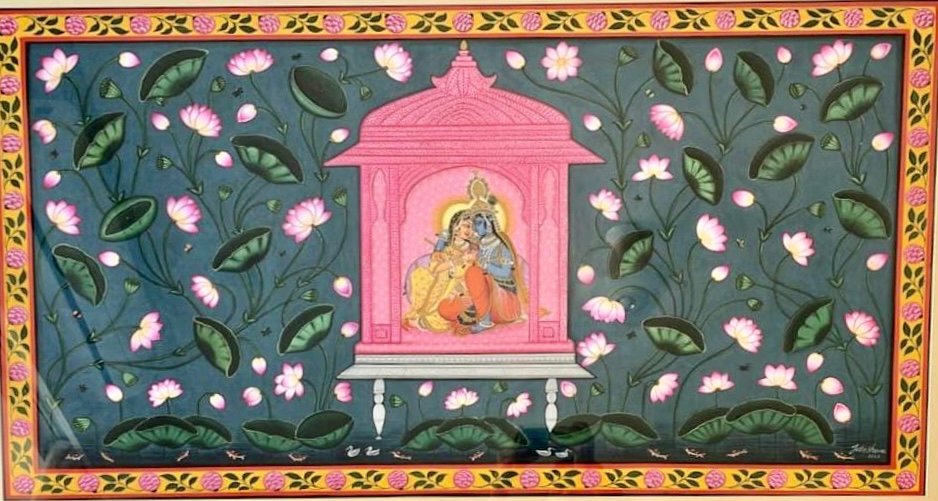
Inspired by the popular theme of kamal talai (“lotus pond”) this pichvai shows Krisha wooing his beloved Radha in a vibrant pink chhatri surrounded by luscious lotus blossoms along the banks of the Yamuna River.

This work explores the popular theme of kamal talai (lotus pond) in a more contemporary style which features colourful lotus blossoms scattered throughout an indigo-hued, geometrically-stylized pond. As the focal point, we see a singular blue lotus flower supporting one of Lord Krishna’s most prominent accoutrements — his melodious flute.

This stunning, gold-laden pichvai depicts Krishna charming a group of gopis who have been lured by the enticing tune of his flute as a herd of cows frolics through a lotus pond below.

The painting depicts the shringar (adornment) of Shrinathji. Gol Kachni shringar of Shrinathji is done once a year on Ashvin Shukla Ekadashi. Here he is depicted donning elegant gold ornaments and an elaborately trimmed and elegant dress.
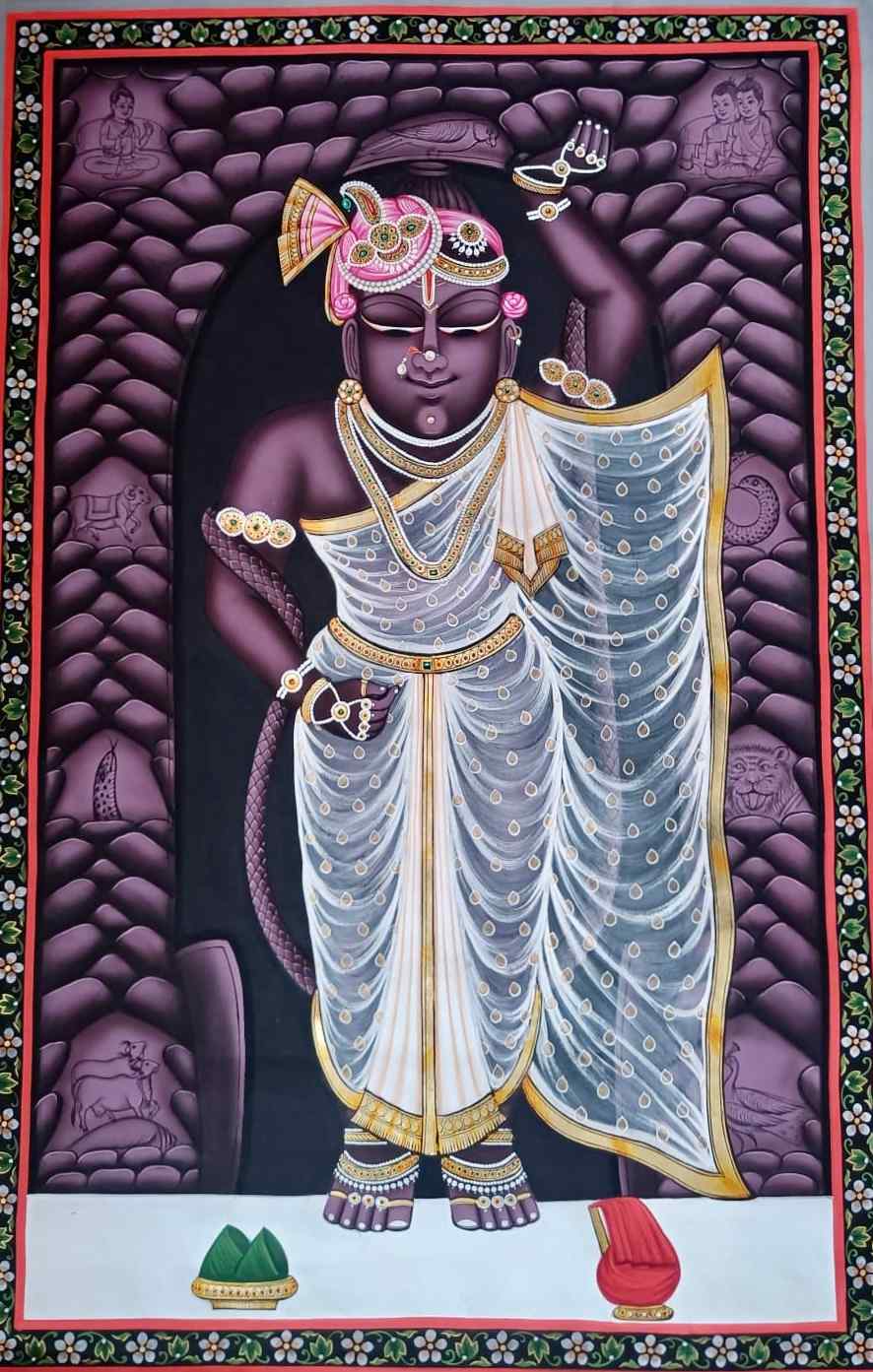
This dramatic pichvai represents mangla, the first of eight daily darshans at the Haveli of Shrinathji. This work depicts Shrinathji dressed for the warm summer months in a lightweight garment with stunning, yet comparatively minimal adornments.
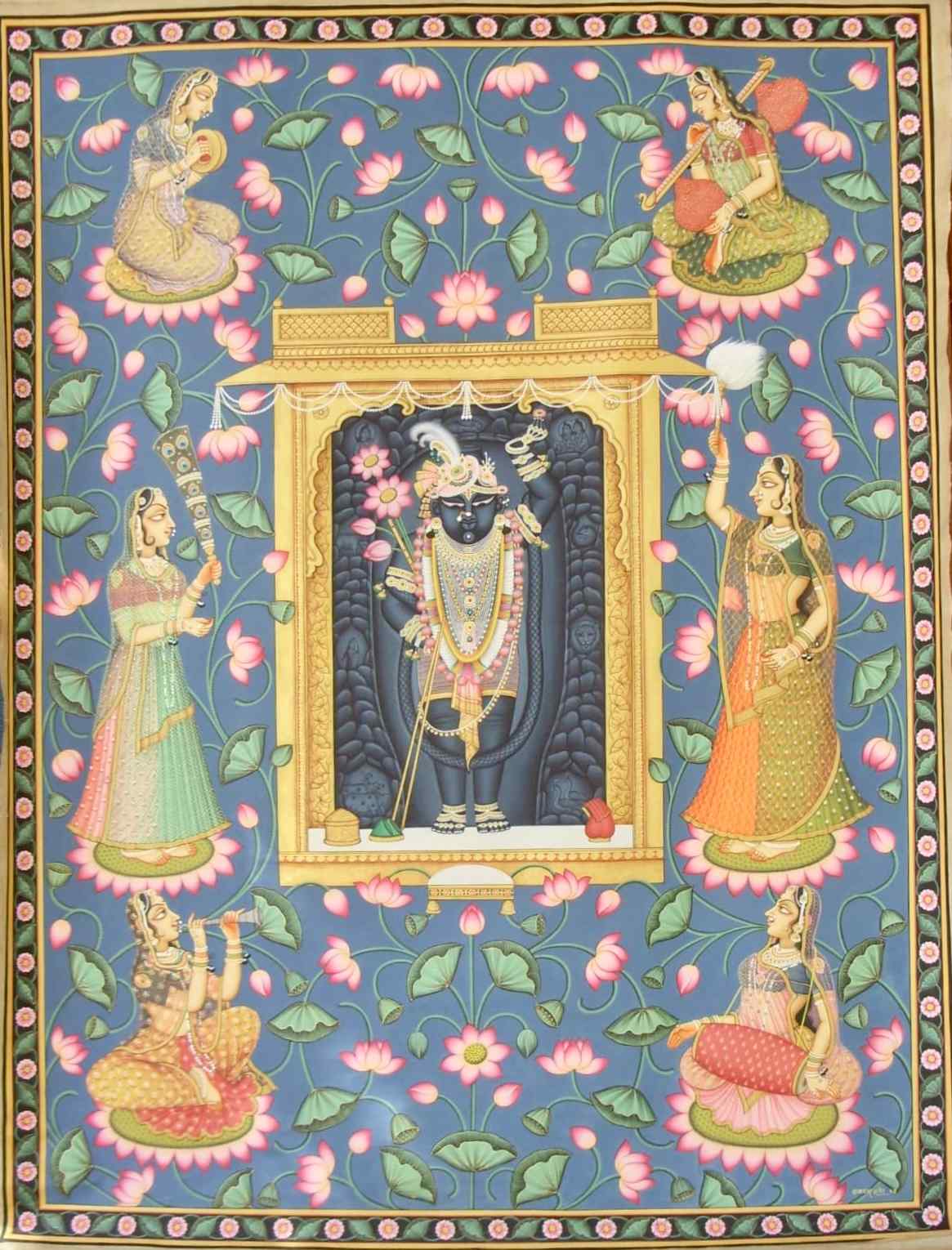
This pichvai is made from natural pigments on cloth with real gold and silver and shows Shrinathji flanked by two gopis tending to him with fans while four seated musicians entertain in each corner.
As for Suresh, he is sentimental watching his ancestral works of art find their way from the closely spaced artist houses in Nathdwara to major cities, where they find their way to home shrines.
“These paintings reflect emotions and bring a sense of calm to anyone who sees them. The pichvai form of art is who we are. We will never stop.”
Edited by Divya Sethu
This story made me
- 97
- 121
- 89
- 167
Tell Us More
We bring stories straight from the heart of India, to inspire millions and create a wave of impact. Our positive movement is growing bigger everyday, and we would love for you to join it.
Please contribute whatever you can, every little penny helps our team in bringing you more stories that support dreams and spread hope.







